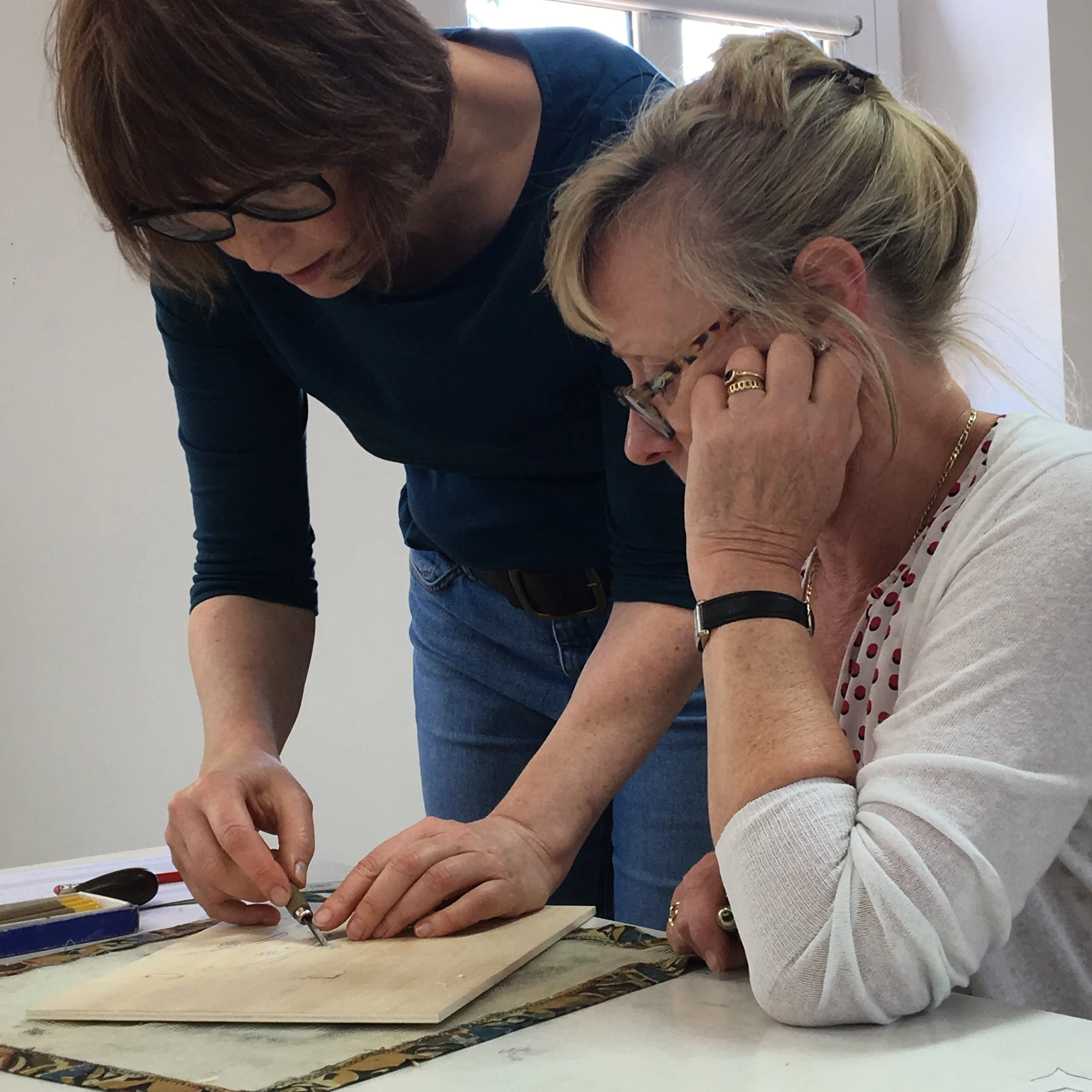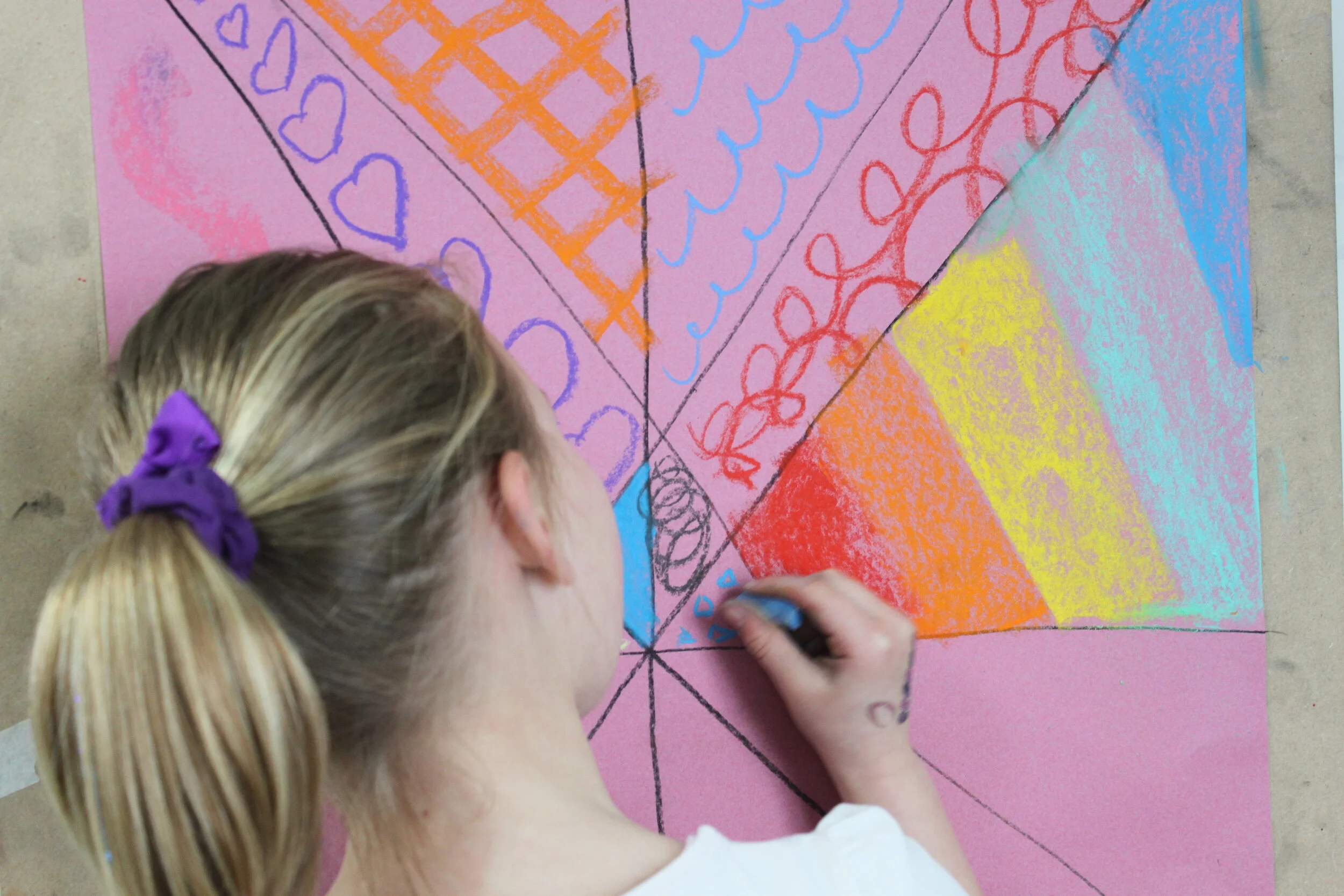Giving Talks & Demonstrations
Episode 42: Doing a Talk or a Demo in Public!
Given the huge interest in art and crafts most professional artists and makers will be asked from time to time to talk about their work, or to demonstrate their methods. There is no compulsion to do this of course, you can just say no! Peter and Laura have never been known to refuse an opportunity to get up in front of the public though, they both enjoy the experience and the benefits that talks and demos bring. In this episode they talk about the way that they approach an event, covering planning, set-up, technology and so on.
Talks and demonstrations can be a lucrative side gig for a working artist and are often an expected part of shows and events like open studios. Don’t be shy, follow Peter and Laura’s practical advice and get ready to enjoy the adrenaline rush that comes from sharing your artistic passion with a new audience.
The Useful Stuff
1. Relax; you’ve got this. Good talks and demos are all about sharing your passion. No audience wants you to fail. They come ready to be swept along by your enthusiasm for your subject. Just remember to stay on topic and keep an eye on the time.
2. Assess the event and your audience. A show may require a continuous series of short demos while chatting; a very different approach from a focused art group expecting a forty minute talk plus a detailed demo. The same applies to audiences: are they die-hard enthusiasts for your technique or just mooching around a show for fun? Tailor your presentation to fit and never be afraid to ask the audience about their level of knowledge before you start talking.
3. Preparation is everything: practice your demonstration to time and make a full checklist of every item needed. Always check your travel times. Remember to ask the venue what technology is available and make sure your technology is compatible. Allow time to set up before events; nobody enjoys watching an artist faff about.
4. Take props, finished work, marketing materials, items for sale, plus means of taking payment and a way to add people to your mailing list. People love to examine an artist’s tools and materials. Peter often sets a little test about his work to engage his audience and encourage a connection. Laura, during shows, will connect with a silent observer by answering their unasked questions. It’s up to you to find a way to get a connection started and that gets easier the more you practice.
5. Keep talking while you demonstrate. People need to know the ‘why’ of what you do as well as the ‘how’, so do explain your method and the thoughts behind it. Remember at shows and art fairs people come and go, so repeating yourself is a necessity.
6. Tell your story: the audience want to connect with you and all humans respond to storytelling and anecdotes. Keep stories brief, funny and to the point. Laura always shares tales about overcoming problems and disasters: people love to hear about imperfections! Encourage questions, but if they are inappropriate for the moment, don’t be afraid to tell the questioner that you’ll discuss their query later. It is vital to keep your talk and demo on track.
The Takeaway
Keep your talk warm and personal with plenty of stories about you and your experiences, but keep them short and to the point. No shaggy dog stories!
This Podcast is sponsored by Michael Harding Colours. For more information about Michael’s colour range or to find a retailer near you, please visit www.michaelharding.co.uk






